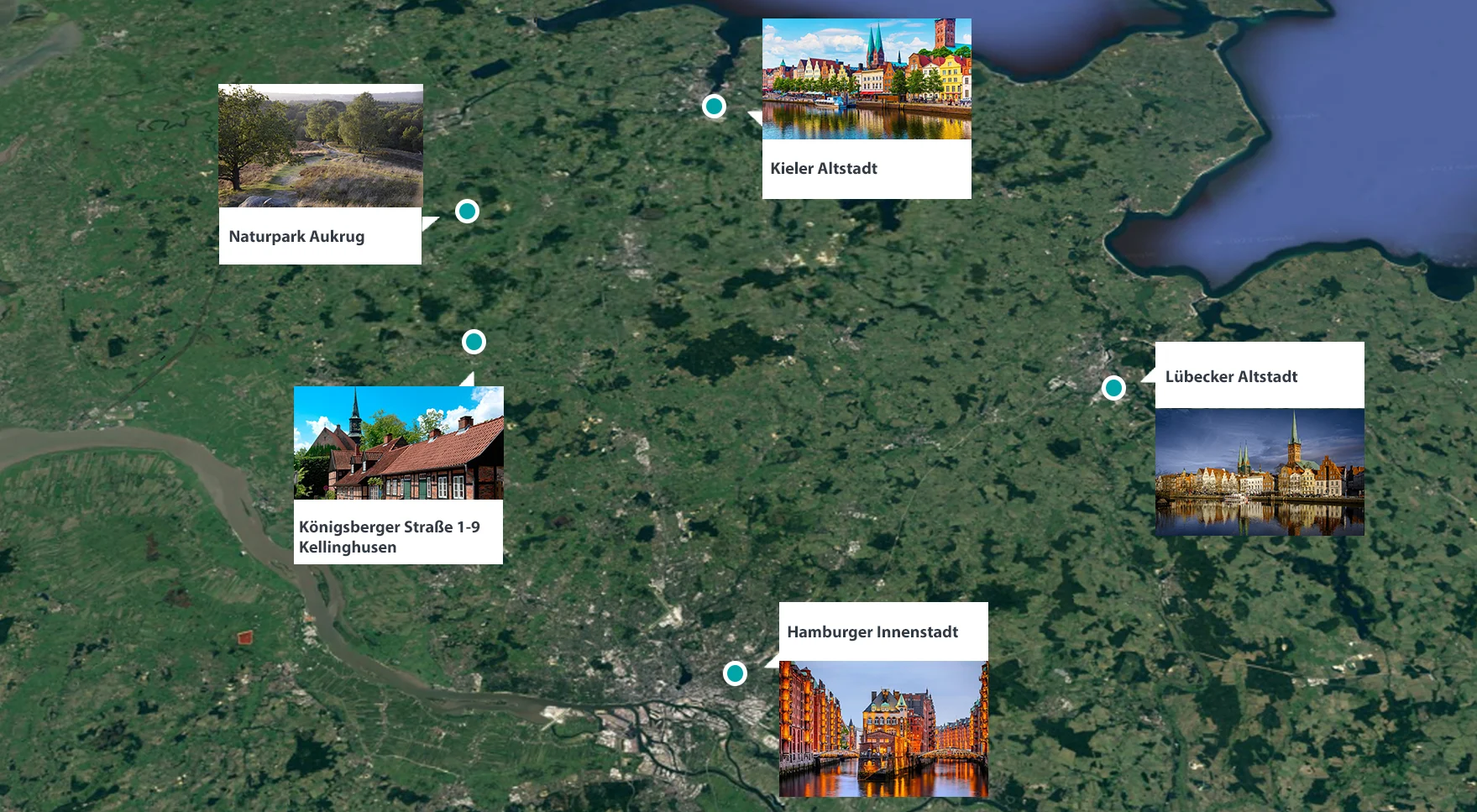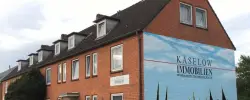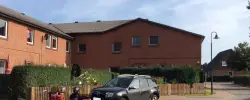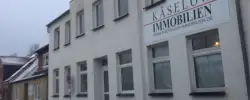Königsberger Straße 1-9
Return
5% p.a.
Duration
48 months
Project type
Income
Distribution
Quarterly
Notice according to § 12 (2) Vermögensanlagengesetz
This investment involves considerable risk and may result in partial or total loss.Project Presentation
The "Königsberger Straße 1-9" project involves the maintainance of nine apartment buildings in the small town of Kellinghusen in northern Germany. The issuer, Deutsche Grundbesitz GmbH, already owns the property and plans to extensively refurbish the rental units as part of the project, thereby adjusting the rent to the current market value. In addition, the issuer plans to maintain the residential units on a regular basis in order to keep them in good condition on a sustainable basis. Currently, around 195,000 € in rental income can be generated annually. After completion of the refurbishment, it is estimated that around 358,000 € of rental income can be generated.
The property has a total of 96 residential units with an inventory area of 3,930 m² (total usable area) and the property with a total area of 8,736 m². The property is currently 98 % rented. The last partial renovation took place in 2020.
Kellinghusen is a small town south of the nature park Aukrug. The major cities of Hamburg, Kiel and Lübeck can be reached in just one hour from the property. The town is ideal for enjoying nature, but also for quickly reaching the surrounding major cities. Local amenities of all kinds are located in Kellinghusen and in the immediate vicinity of the property.
Location
Welcome to Kellinghusen
Kellinghusen is located in northern Germany and is characterized by its idyllic location along the Stör River. The small town lies northwest of Hamburg and is the gateway to the Aukrug Nature Park. The rolling hills and expansive valleys bring back memories of the Ice Age. The town lies between "Geest" and "Marsch", with Geest being considered a barren landscape and Marsch a fertile one. Today, the steeply rising "Geestrand", the Stör, as well as the Marsch characterize the townscape of Kellinghusen. The unique landscape forms give Kellinghusen an unmistakable charm.
Microlocation Kellinghusen
The "Königsberger Strasse 1-9" project is located in the small town of Kellinghusen, south of the Aukrug Nature Park. The rather undiscovered but worth seeing town is also known as the ceramic town and the stork town due to its long-standing traditions. The approximately 7,800 inhabitants enjoy the peace and quiet as well as the retreat from the large cities of Kiel, Hamburg and Lübeck. Kellinghusen is not lacking in local supply facilities of all kinds (doctors' offices, schools, kindergartens and supermarkets).
Discover the surroundings
Kellinghusen is the ideal place for nature lovers, as the 380km² Aukrug Nature Park is located in the immediate vicinity to the north of the charming small town. The town is known not only for its unique architecture, but also for its old traditions, such as the old faience factories where stylish ceramic pieces were produced. Kellinghusen is surrounded by rolling hills and impressive landscapes reminiscent of the Ice Age. The surrounding cities of Kiel, Hamburg and Lübeck can be reached within an hour via the nearby train station "Wrist".
Aukrug Nature Park - "Discover pure nature".
The Aukrug Nature Park is located in the middle of Schleswig-Holstein. A total of 40 communities and 2 towns with almost 38,400ha belong to the nature park area. The park was declared a nature park in 1998 by the Ministry of Environment, Nature and Forests of Schleswig-Holstein. The 380 km² park leads to the wild beauty of renaturalized areas, small rivers, lakes and to unknown sights. Here you can marvel at untouched nature, explore the natural forest landscape and experience exciting botany. The Aukrug Park inspires with its impressive nature, from varied and glacial hilly landscapes, wide valley areas and near-natural forests to flowing waters. The park, which is a protected area, strives for sustainable tourism. The national park strives for environmentally compatible land use that serves to preserve or restore the diversity of species and biotopes.
Kelllinghusen faiences
Kellinghusen is known as a ceramics town because of its faience factories. The Kellinghusen faience factories from the 18th and 19th centuries are easily recognized by their particularly colorful paintings. Kellinghusen was characteristic and formative for the ceramic history of Schleswig-Holstein because of its dazzling, very sweeping paintings.
Kiel Old Town
Kiel is an important port city in northern Germany with a population of around 250,000 and is considered the state capital of Schleswig-Holstein. The old town charm of the city was decisively influenced by the Second World War. In some places, the former charm of the city can still be seen. Dänische Straße, where many traditional companies have settled, is an ideal place to discover Kiel's old town charm.
The city also impresses with its beautiful location on the Baltic Sea and can be reached from Kellinghusen in about 50 minutes. On hot summer days, the port city offers an escape to the Kiel Fjord. The beaches and bathing spots are freely accessible to visitors. Especially the beach "Hasselfelde" attracts attention, here you can admire unique sunsets.
Lübeck Old Town
With just over 200,000 inhabitants and 214 km², the Hanseatic city of Lübeck is considered the second largest city in Schleswig-Holstein. Lübeck is also one of the state's four regional centers. More than 7,000 students are attracted to the charming city every year, with the number of students increasing annually. It is thus one of the most important centers for teaching and research in the state. Around 7000 ships call at the port city every year. Lübeck's old town is famous for its cobblestone streets and romantic arcades. The world-famous landmark, the Holsten Gate, is a popular destination. The city gate delimits the old town of the Hanseatic city of Lübeck to the west. The Holsentor is not only the city's landmark, but also the city history museum of Lübeck since 1950. In addition, the city is also known as Marzipan City and traces its roots back to the marzipan tradition founded in 1800.
Hamburg city center
The Hanseatic city of Hamburg, with a population of over 1.9 million, is the second smallest of the 16 German states with an area of only 755 km². It is also the most populous city in Germany after Berlin and has one of the largest and busiest ports in Europe. Hamburg and Bremen are the only German city-states that still retain some of their medieval independence. Hamburg's characteristic individuality has been proudly cultivated by its citizens, so that the city's culture has retained its uniqueness in many areas of public and private life and has not succumbed to the general trend toward standardization.

Team
"Competence meets sustainability - Secure growth is our top priority."
The Käselow Group is a group of companies operating in Germany that specializes in building a sustainable real estate portfolio. Fixed key indicators help the successful real estate company to achieve long-term success and steady potential. The sustainable strategy and the long-term-oriented investment approach enable the investment risk to be minimized in the long term.
"A good relationship with our tenants is important to us." - The Käselow Group is keen to take things into their own hands, which is why they have been managing their properties since 2008 with the help of a real estate brokerage and in-house property management - the individual should be well looked after and is a priority in all respects at the Käselow Group.
In order to remain sustainable and true to its principles in the long term, the Käselow Group has built up a network of specialists who can offer advice and support based on many years of experience.



